This is the third post in a series of articles about my current project: REVISIONING FLIP DOLLS. I received a Conant Grant from the Potomac Fiber Arts Guild and as part of this project, I am Nelson Mandela – Long Walk to Freedom (1995) No one is born hating another person because of the colour of his skin, his background, or his religion. People must learn to hate, and if they can learn to hate, they can be taught to love, for love comes more naturally to the human heart than its opposite.’ Why flip dolls? I’m going to share with you as much as I can of what I have learned about flip dolls so far. It’s been an interesting year or so that I’ve been immersing myself in anything and everything flip doll, since I began the research for the application for the Conant Grant from the Potomac Fiber Arts Guild, which I was awarded in June of 2016. There is no way that I can share everything here. There are many explanations and descriptions of how the dolls came about and that in itself could be the subject of a long article. An unavoidable truth is that one of the origins of flip dolls is in the very ugly past of American slave ownership. This ugliness continued in the aftermath of the slave era, with the stereotyping of black characters such as Aunt Jemima, Mammy and Little Black Sambo (this last was not unique to the U.S. but expanded to England and Europe as well.) Even though the history of slavery and the oppression of blacks is such a huge topic and really the subject of another article (or book), it’s important enough that I want to include some historical context in this article. So, why flip dolls? Because they represent such an important part of our multi-cultural history as Americans, both the challenges and the strengths. In doing my research for this project, I have learned a great deal about how flip dolls mirror the history of racism in our culture. My hope is that the material that I present in this series of articles, the work with the homeless women and my own flip dolls go some small way in bringing awareness to some of this history. And that it might also provide an opportunity to find a measure of healing from this past. And a note: I've done my best to cite sources for any information I have included here and have tried to be as accurate as possible. I apologize for any inaccuracies. Sources are sometimes difficult to find. I would appreciate your bringing any mistakes to my attention. Below an example of one of the first topsy turvy pressed face flip dolls by Albert Bruckner, with details of the faces-more about this below Harriet Beecher Stowe and Uncle Tom's Cabin: first black/white flip doll characters My reading took me widely, to a biography of Harriet Beecher Stowe (Harriet Beecher Stowe: A Life by Joan Hedrick,) author of Uncle Tom’s Cabin where the original flip doll characters, , Eva and Topsy, originated and where the name Topsy-Turvy for flip dolls came from. Some interesting facts from this book: I didn’t know that Beecher Stowe wasn’t initially an abolitionist, but instead sort of fell into writing the book that ended up bringing her most into the public eye. Controversial as her book was, it did raise awareness at the time, of the treatment of slaves and might have helped the cause somewhat. The most interesting thing I learned from the biography was that her biggest concern in writing the UTC book was in response to the Fugitive Slave Act of 1850, that tried to force whites in the Northern States of America to return escaped slaves to their owners in the South. She hoped that her book would bring awareness of the injustice of this law. Another interesting thing I learned was that she herself, as a Northerner, never visited a Southern slave plantation and wrote the book using her vivid imagination and stories from anyone she could find who could describe life on a plantation to her. Below: Topsy-Turvy by Horsman, Eva on one side and Topsy on other, circa 1890s as illustrated in Jensen's Collector's Guide to Horsman Dolls Identification and Values 1865-1950, from Debbie Behan Garrett's extensive article about flip dolls  To inform myself more of the context for the original slave-made flip dolls, I read two books, Mammy: A Century of Race, Gender, and Southern Memory and Skin Deep, Spirit Strong: The Black Female Body in American Culture by Kimberly Wallace Sanders and also had an e-mail exchange with her. Sanders is a scholar of African American Studies at Emory University. In Mammy, Sanders tracks the use of stereotypical images such as Aunt Jemima and Mammy during the antebellum era. Mammy (a name used for the maternal black woman who took care of white children, first as a slave and then later as a hired help) and these other stereotypical characters were used to whitewash American memory of what the slave era really meant. Her second book is a series of essays that “chart the ways that the simultaneous interrogation of gender, race, and corporeality shape the construction of black female representation.” The essays explore the ways in which depictions of bodies of black women were used to exploit and undervalue them. I highly recommend both of these books if you want to learn more about the interconnected, complicated (and at times very disturbing) history of whites and blacks in the Antebellum South and in our culture in general. Below: example of Black Mammy/Sothern Belle flip doll from 1950's, cotton, muslin fabrics, yarn, metal rings (on Etsy)-relates to Sander's idea of idealization of the "Mammy" character in Antebellum South. These kinds of dolls were common in the Antebellum South but also became popular in the North and even Europe. I also read a research paper by Ann Stachowski, entitled “Black Dolls and American Children: Learning what Dark Skin Meant in Antebellum America,” which also references Uncle Tom’s Cabin and the Topsy-Turvy doll. Stachowski describes how the topsy-turvy doll, among other black and white dolls, were used as an misplaced educational tool, teaching white children of antebellum America of the white’s superiority over blacks and keeping the black children "in their place." She also describes the emergence of a black middle class in the mid 1800’s in Philadelphia and how Northern blacks began a movement to create black dolls that would inspire and empower their children. These dolls wore the refined clothes as the white middle and upper classes and depicted characters who lived more varied lives. I haven’t yet been to find any depictions of flip dolls that emerged out of these efforts. Contemporary artists and crafters making Flip Dolls: I read many, many articles on-line about flip and topsy-turvy dolls and looked at many images of flip dolls. And as you can see in previous articles in this series, I interviewed and am interviewing contemporary artists who create flip dolls. I also found an interest in flip dolls on-line among crafters, including a knitted pattern for a werewolf flip doll (Annie Watts) and an artist who calls herself Southern Belle (Nina Terry), who created a series of “gothic” flip dolls with names such as “mourning doll/ghost doll, poison coffee/poison tea.” The knitted doll was the first time I saw the interesting variation of flipping the doll inside out as opposed to flipping it from top to bottom. If you look at an earlier post in this series you will find my interview with Judith Scott, included because her Mammy series of beaded figures relates strongly to the theme of how flip dolls originated, even though she doesn’t make traditional flip dolls. My overall interest in undertaking this project was also to subvert and transform the origin of flip dolls into something more inclusive and accepting. I will be publishing more interviews in this flip doll series on this blog. Below: Annie Watts knitted werewolf topsy turvy doll (left) and Nina Terry Gothic Southern Belle, "Victorian Spiritualism" Tea leaf reader/Lady of Seance and Mourning Bride/Ghost Bride (middle and right) Evolution of Flip Dolls: From the original black/white flip doll, the flip doll evolved in content, style and character. These dolls were mass produced and patterns for the dolls were also mass produced. And later, fiber artists created their own version of the doll. In countries such as Barbados and Jamaica flip dolls were created by native women in traditional dress, with different outfits on each side of the doll. Flip dolls lent themselves well to stories such as Little Red Riding Hood doll, with little red riding hood on one side and the wolf on the other, often with the grandmother on the other side of the wolf’s head. Other stories depicted in flip dolls were Snow White, with Snow White on one side and the dwarves on the other, or Alice in Wonderland or Cinderella. Sometimes the dolls depicted simple opposites. Contrasting awake and asleep dolls were one example. Flip dolls became so popular that many sewing companies offered patterns so that consumers could make their own dolls. From Historical Folk Dolls website: "During the mid 1900s, McCalls, Vogart, Redline and Butterick pattern companies began producing their own Topsy-Turvy Doll patterns. Vogart's pattern in the 1940s was titled, "Topsy and Eva Doll--One doll with two changeabout faces." Redline's pattern in the 1940s was called Topsy and Eva. McCalls' 1940's pattern #1014 was for an "Upside Down Doll," but both dolls were white. Some of these historic patterns are now available as copies." (see below for links to sites that offer flip doll patterns.) Below: from United Federation of Doll Clubs DVD: Images of flip doll patterns by Vogart, American Crafts (box and then contents of box-all supplies were included, Simplicity (pattern and then image of doll made from pattern,) and last, an example of a ready made flip doll pattern printed onto fabric, and then doll made from that pattern And, from New York Historical Society and Museum and Library Teen Historians "The Topsy Turvy Doll: An Upside-Down History", also in the 1940's and '50's, "stores such as Sears, Montgomery Ward, and Bruckner revitalized the doll by basing their versions off of popular characters, such as those from the story of Red Riding Hood including the wolf, grandmother, and Red herself. The emergence of successful children’s movies, especially Disney’s, increased the number of marketable characters considerably overnight. The simplicity of the stories in many Disney movies directly appealed to the dual nature of the dolls, pitting heroes against their foes and featuring both film’s leading duo. The colorful design of the characters also lent themselves well to dolls and the popularity of the topsy turvy doll soared, completely forgetting its background in slavery." Below: (left) cloth Red Riding Hood and the Wolf doll, with grandmother on back of the wolf's head, (middle) Topsy Turvy: Little Red Riding Hood and the Wolf doll, ca. 1890, Material fur | bisque | cloth, Origin France, Style multi-head, Object ID 78.1016, Strong Museum of Play, from Linda Walsh's doll blog, (right) 1980's Jamaican and Barbados souvenir flip dolls from Behan Garrett's The Definitive Guide to Collecting Black Dolls, p. 40 (2003). Flip Dolls as a Medium to tell stories and empower women: I’m in the process of working with women at the N. Street Homeless shelter, teaching them to make flip dolls. I will talk more about these as these projects develop. Over the past couple months I have been bringing flip doll making materials, (many wonderful fabrics and embellishments donated by women in the Potomac Fiber Arts Guild) for every other week sessions at one of the sites at N. Street Village Homeless Shelter. A small but dedicated group of women have been working on flip dolls. We started by making "story skirts," or decorated skirts to tell stories that are important to them. Below: women at N. Street Village homeless shelter working on flip dolls as part of an on-going workshop. These two women are working on their "story skirts." Definition and origin of Topsy Turvy or as I’m calling it, flip dolls. As mentioned above, the first known appearance of flip doll was in 1852 in the American South during the Civil War. This was the-Topsy and Eva doll based on the characters in the Harriet Beecher Stowe Uncle Tom’s Cabin book. (again, New York Historical Society and Museum and Library Teen Historians "The Topsy Turvy Doll: An Upside-Down History" by Hannah Batren) This is the first publicized appearance of the flip doll but clearly the doll already had a presence in the homes of slave owners and slaves. However, possibly because slaves were forbidden to write, there is limited documentation of flip dolls constructed prior to this time. In one of the best articles on the topic, “Topsy-Turvy a.k.a. Topsy-Turvey, Double Doll, Two-Sided Doll” (in a post in Debbie Behan Garrett's Black Dolls Collecting blog, also mentioned above) Behan Garrett cites one theory that the flip doll, “appeared in the South in the 1800s. These dolls share one body. Each doll’s dress or skirt, when flipped, hides the other doll underneath. It is widely believed that servants made these dolls for their children using dress scraps. The slave child would play with the white side in the absence of the slave master. Upon the slave master’s approach, the child would flip the doll over to the black side to hide the forbidden-to-play-with white doll. Others postulate the dolls were made by slaves for their masters’ children, who were forbidden to play with black dolls. In the absence of their parents, the white child would play with the black doll and flip the doll to the white side upon their parents’ or other disapproving person’s approach.” Note: Behan Garrett is also author of the book Black Dolls: A Comprehensive Guide to Celebrating, Collecting and Experiencing the Passion Below: Images of early handmade flip dolls from United Federation of Doll Clubs DVD (See link below.) In Antebellum South flour was sold in floral flour sacks. The first three images are of a Topsy and Eva doll with a skirt made out of the floral flour sack cloth. Fourth doll is an 11 inch doll with hand embroidered features. The DVD narration states that this doll may have been owned by a slave girl in the South. She is very well worn. Another view of the origin of the flip doll comes from author and scholar Kimberly Wallace Sanders, in her book, Mammy: A Century of Race, Gender, and Southern Memory (see above.) She suggests that instead of the flip dolls being forbidden for either the black or white children to play with, “the dolls were made by the mothers of slave girls to socialize young slave girls into their future roles as caretakers and mother substitutes for the children of their white slave owners.” This interpretation seems more likely to me. It also fits because I wonder why the black slave children would be so interested in playing with white dolls. Possible explanations may have been that the white dolls were desired as a novelty or because they were forbidden, or it may have been a wish to feel connected to the culture in power. The answer to this lies only in speculation. Below: another Bruckner 1901 pressed mold face topsy turvy doll from Dixie Redmond blog. The source Historical Folk Toys describes how “the authentic Topsy-Turvy doll, features a black doll with a headscarf on one end and a white doll with an antebellum-style dress on the other end. The black doll could represent a maid, slave or servant and the white doll could represent the master's child or the mistress of the house.” The clothing fits with the idea that the original Topsy-Turvy dolls were used to reinforce stereotypical black/white roles in society.  Another unusual theory of the flip doll origin comes from the Strong Museum of Play, whose collection also includes a Bruckner “Topsy-Turvy Two Faced Cloth Doll.” According to their website, “some doll historians think the topsy-turvy evolved from the Pennsylvania Dutch hex doll. The head of a man at one end cured warts. The other end, with a head of a pig, cast spells.” Image from United Federation of Doll Clubs DVD (see link below) Narration in the DVD states: The Pennsylvania hex doll had heads of kid leather. The pig’s head cures warts and other human ailments. The human head casts spells on a neighbor’s horse or crops. Dewitt Burton[sp] patented a multihead doll in 1899. Some of these dolls were intended to be magical objects Quote is from Debbie Behan Garrett's transcription of the DVD. Were flip dolls first made in Africa? Questions abound. In some of the readings, it is speculated that African women might have created flip dolls for their children before being captured and sold as slaves in America. I haven’t been able to find any documentation of this but with the wide variety of creative toys and dolls created in Africa such as the Nbedele dolls (see below) or others, this is quite possible. Below: South African Ndebele Beaded Dolls, traditionally used in courtship rituals to ensure a strong marriage and fertility. In modern times they have become a way of honoring ancestral traditions and are a major export item for Ndebele women’s artists cooperatives. Lindo Collection. from Dolls: Collection, Stories, Traditions, Exhibit at the Sargent Johnson Gallery in the African American Art & Culture Complex, San Francisco, curated by Nashormeh Lindo. Materials used in flip doll construction: Early flip dolls by slave women were created out of any material they could find, mostly scraps of cloth attached to bones, a gourd or a broom, from the mid-1800’s to the early part of 1900. In the beginning of 1900, as the dolls began to gain in popularity and become mass produced, their faces were printed, using lithographed faces on cloth. The bodies were still made of cloth, but later dolls appeared with wooden bodies and jointed arms. In the mid 1900’s patterns for topsy-turvy or flip dolls began to make their appearance. These dolls were made of cloth with soft bodies and cloth faces. Some paper doll patterns were also offered. In her article, Black is Beautiful: Why Black Dolls Matter, Lisa Hix quotes Debra Britt (founder with her four sisters of the National Black Doll Museum in Mansfield, MA) about the early materials slaves used to create dolls, including flip dolls. “Slaves living and working in the main plantation house were more likely to have access to high-quality scraps for doll-making, but slaves working the field would have to be more creative when it came to materials. They would make dolls from whatever they had, whether it be the bones of a chicken, a nut, a cornhusk, an empty gourd, a mop, a broom, or a black nipple from a baby bottle, after the baby had grown.” As Britt describes above, early flip dolls were made with all sorts of scraps, including scraps of cloth, combined with whatever could be found. Note: I wonder about the nipple from a baby bottle idea, since this was the material for some of the stereotyping dolls created in the antebellum era, with black Mammy dolls that had nipples from baby bottles as heads. To me, it seems doubtful that slave women would use this as a material, but again, much of this is speculation. Below: Image below from "Black is Beautiful: Why Black Dolls Matter" by Lisa Hix of A 1920s Mammy doll, made from a black rubber bottle nipple. Via Stonegate Antiques. While not a flip doll, this Mammy doll represents themes also depicted in flip dolls and is characteristic of the ante-bellum dolls that stereotyped the idea of an idealized black Mammy who dedicates her life to caring for her white charges. See this article for more interesting information about the context within which the black white dolls appear and also the evolution of black dolls in America. More about materials for flip doll construction (and yet another radical theory of the meaning of flip dolls during the Civil War era in the American South): An interesting perspective on the materials used in the earliest flip dolls(and another theory about why slave women in the American South made flip dolls) comes from Robin Bernstein in her book, Racial Innocence: Performing American Childhood from Slavery to Civil Rights, (pp 88-91). She makes the point that slave women could have used wood to make the flip dolls, given the availability of the material. She claims that making the flip dolls with soft cloth bodies was a deliberate choice that had two aims. For the black children playing with these dolls, the author saw the soft body as a way of giving the young slave girls, “an opportunity to own and have complete power over a representation of a white girl.” And if the slave woman made the doll for a white child, “the African American doll maker sent that child to bed with a sign of systematic rapes committed by members of that child’s race, if not that child’s specific family. She tucked beneath that child’s blanket-which she may have washed-a sign of that child’s enslaved half sibling, either literal or symbolic.” She goes on to point out that by making this doll cuddly, the slave woman created an ironic situation in which the white child is snuggling with a toy while her slave-owning parents look on, while neither perceive the hidden meanings of this doll, making it a sort of Trojan horse of black resistance. In Historical Folk Toys the evolution of mass produced flip dolls is described. “Black and White Topsy-Turvy dolls began to be mass manufactured after 1900. One of these dolls made in 1901 was purchased with the advertisement: "Turn me up and turn me back, first I'm white, and then I'm black." The Horseman Company produced “the Babyland Rag Doll series including a Topsy-Turvy doll, designed by Albert Brückner, with a hand painted face in 1901. Later, wooden Topsy-Turvy dolls were made with jointed arms.” Albert Brückner manufactured cloth mask faced dolls from 1901-1930. He was by trade a lithographer. While watching a friend work on a rag doll, he conceived the idea of embossing the features onto cloth with a (pressed) mask. He patented the idea in 1901 and established a full line of rag dolls using this method. The mask was printed on sateen or muslin fabric or bisque clay. If you've made it this far in this article, you may be interested in exploring flip dolls further by making your own. There are myriad resources out there on line and I have included some of them here to get you started. I can't vouch for the quality of the videos but this is a start. Here are some links to flip doll instructional videos and flip doll patterns: Flip Doll Patterns and videos with instruction on flip doll construction: Video: How to make a topsy turvy doll Video #2: How to make a topsy turvy doll, all steps Video #3: How to make a topsy turvy doll Cloth Doll Supply company link to vintage flip doll patterns Gail's Doll patterns link to more vintage flip doll patterns and another website to explore with more links to articles, patterns etc, is Linda Walsh Originals topsy turvy article A Challenge: Make Your Own Flip Doll! A challege to all PFAG members and anyone else who would like to try this. Make your own flip doll. Along with the flip doll grant, I’m sending out a challenge to fiber artists (and artists in other media who might be interested) to create your own flip doll. For ideas, see the gallery page on my website and refer to photos, resources and links in this article. You can also Google flip dolls or topsy turvy dolls. There are many resources out there. For a theme, think of opposites but make it personal if you want. For example, a sun or moon goddess, day vs night. Use your imagination. I'll be posting more about this. My hope is to host an exhibit of flip dolls at some point next year, including ones I have made, ones made by the participants in my flip doll workshops at N. Street Village and those who respond to this challenge. I would love to hear from you, especially if you are interested in trying to make your own doll. Please contact me here if you would like more information or if you would like to be part of a possible exhibit. 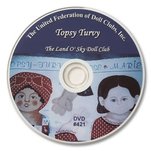 United Federation of Doll Clubs, Inc (UFDC) DVD. This DVD program features numerous variations of the Topsy Turvy dolls ranging from home made to commercially produced. It includes 80 images featuring dolls from the late 19th century through the 20th century. Here is a link to the page where you can buy a copy of this DVD if you are interested in a brief slide show history of flip dolls.
38 Comments
|
ErikaI've been making dolls for about ten years now. I believe that dolls serve as representations and reminders of the best part of ourselves. I am excited to share with you here my learnings about new methods and techniques for doll making and healing. So glad you are here! Categories |
Proudly powered by Weebly
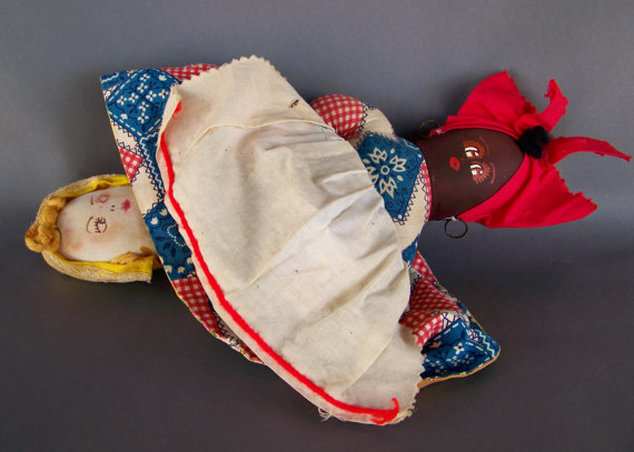
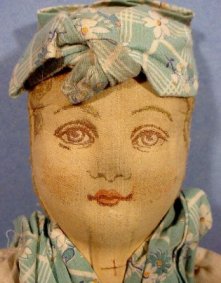

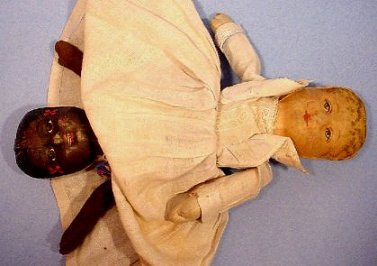






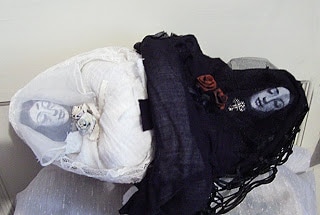

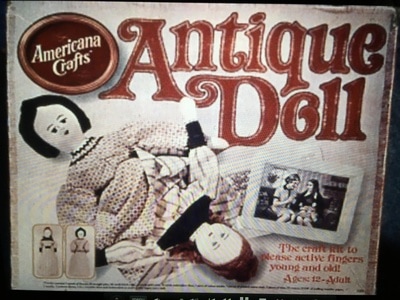
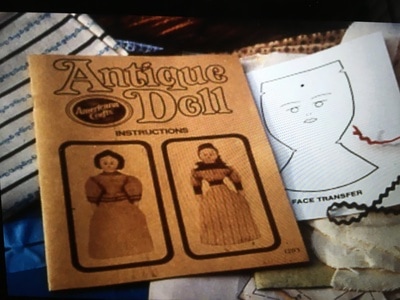
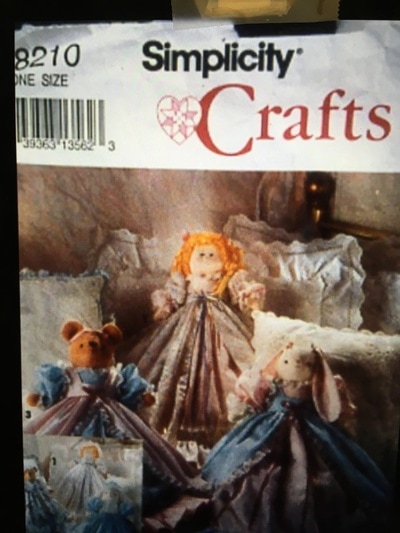

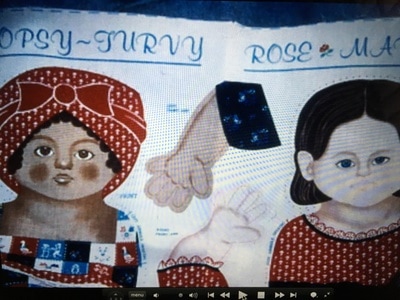
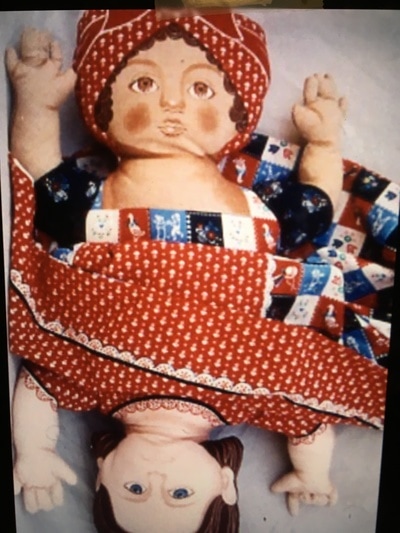


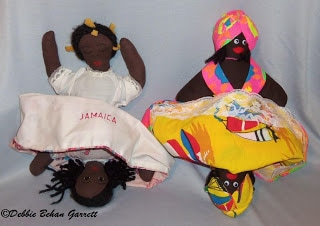
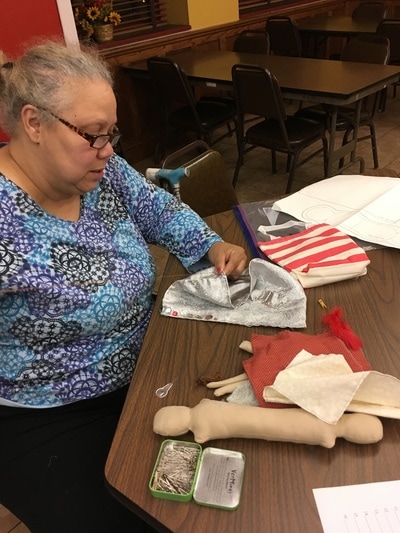





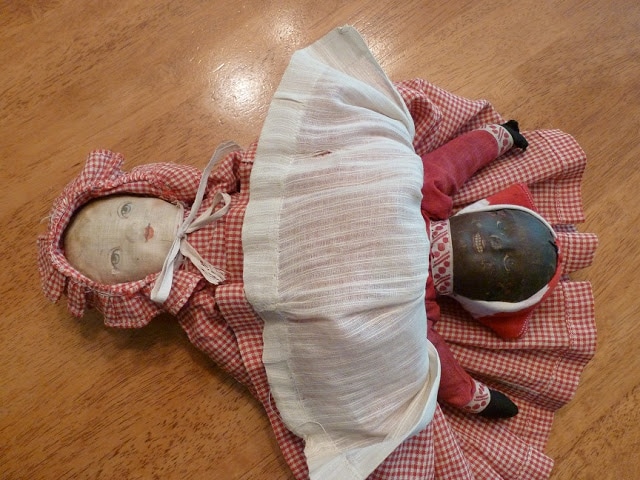
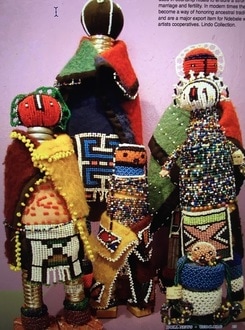
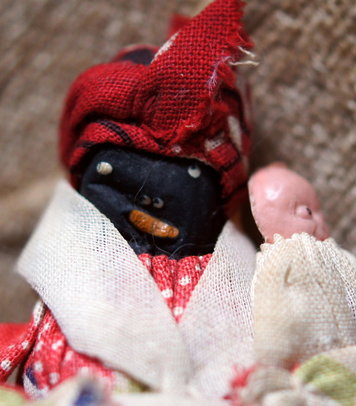
 RSS Feed
RSS Feed